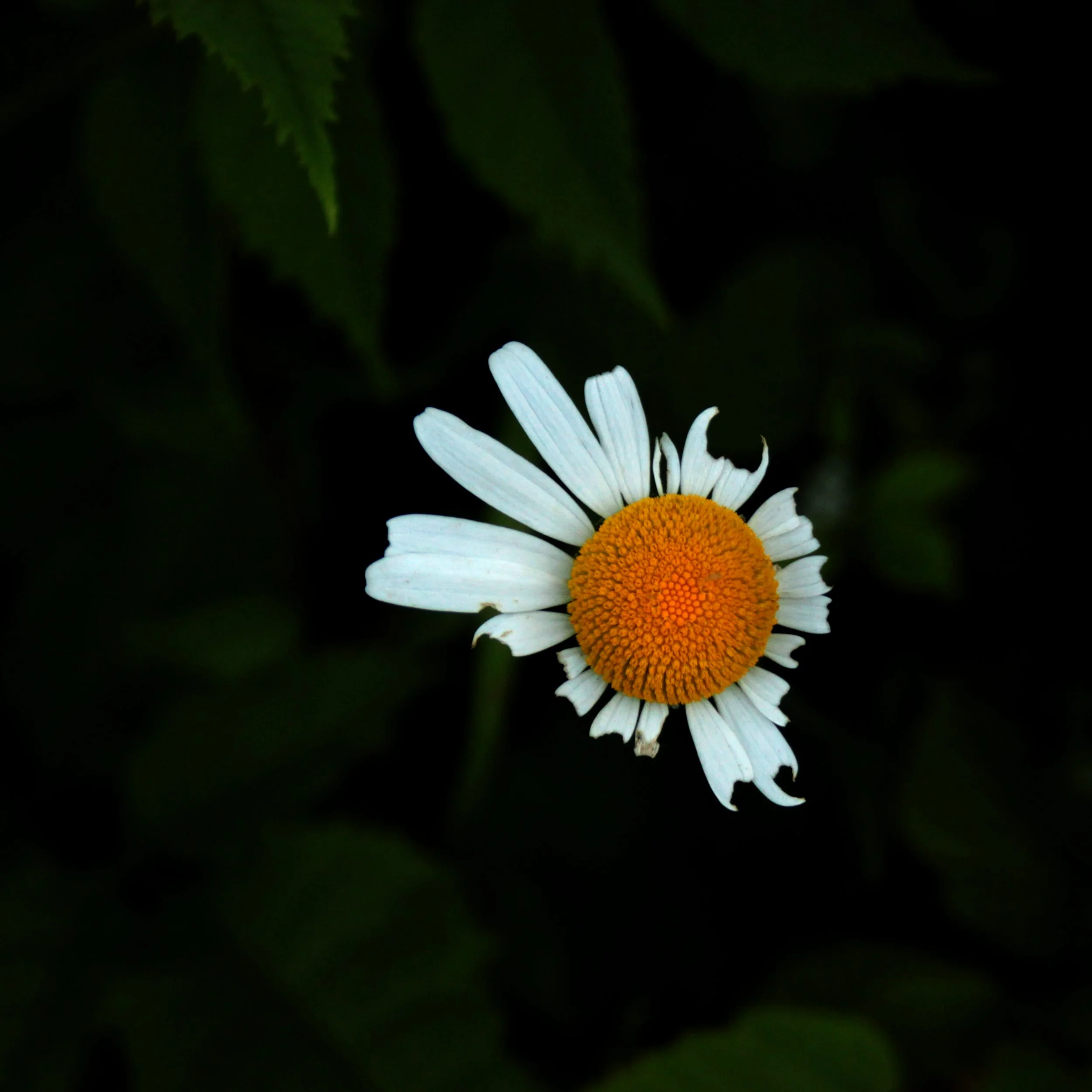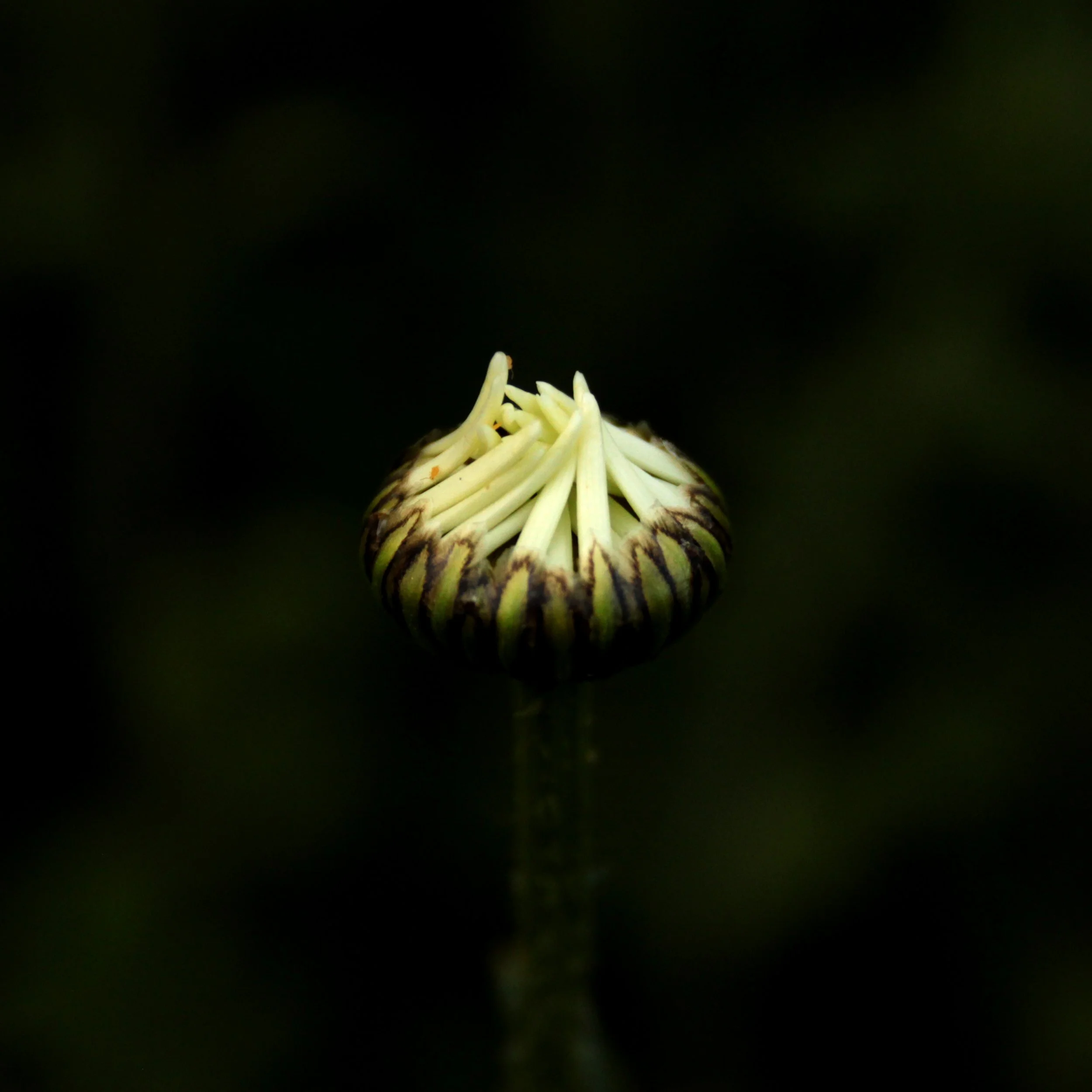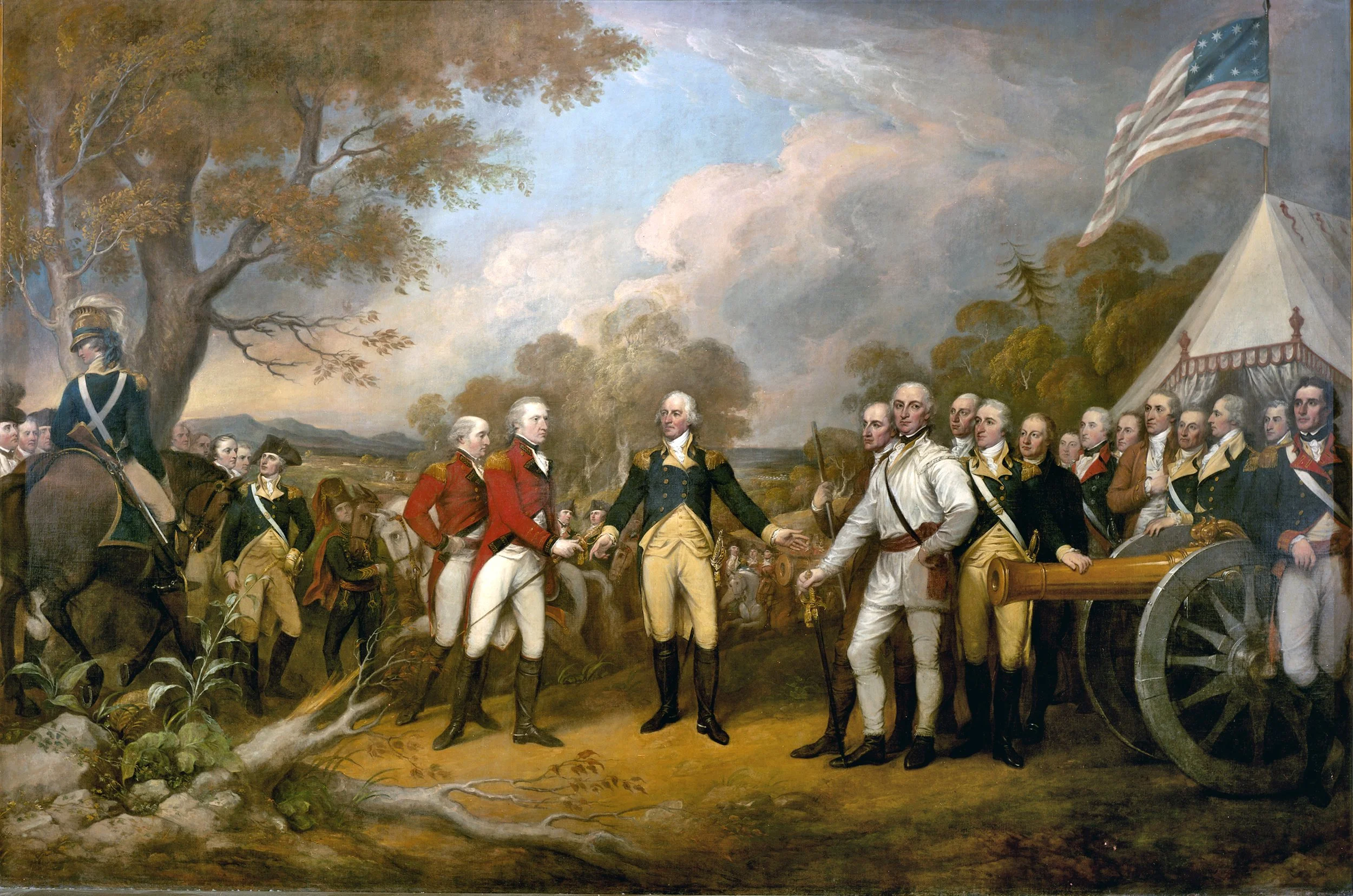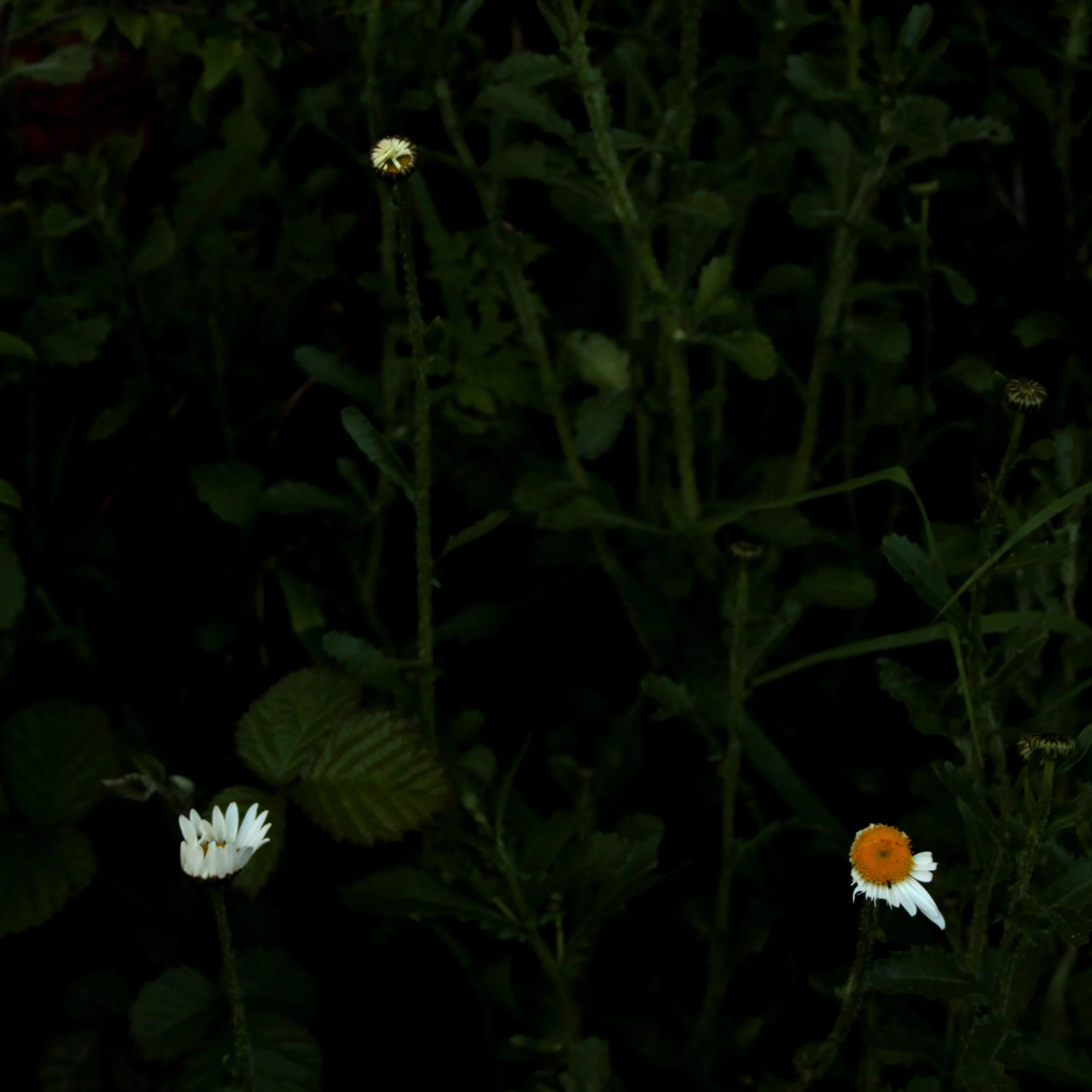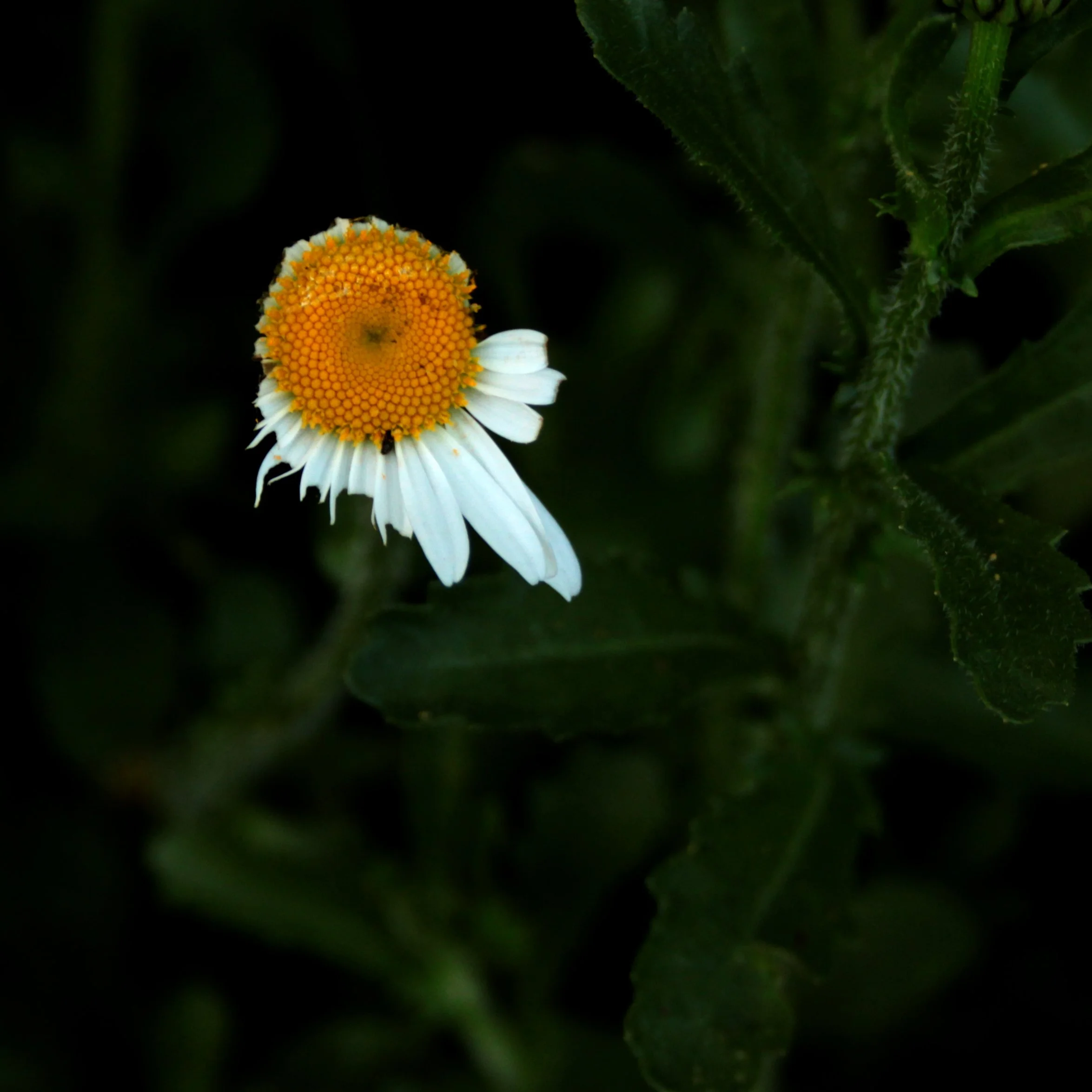July 30th 2024
More than Meets the Ox’s Eye: Daisies in Wales and America
Welsh common names: Llygad Llo Mawr, Aspygan, Llygad y Dydd Mawr
English common name: Ox Eye Daisy
Scientific name: Leucanthemum vulgare
Perhaps the most commonly recognised flower in the UK, childhood memories of daisies feature two pastimes: making chains to be worn as necklaces/tiaras, or love divination; pulling off petals one at a time to find out whether your beloved loves you, or loves you not.
‘Daisy’, comes from old English dægeseage, meaning ‘day’s eye,’ from a belief that the petals opened in the morning revealing the golden centre, and closed at night; although evidence of the flower behaving like this unfortunately doesn’t appear to exist.
The Welsh llygad y dydd also means ‘day’s eye', with mawr meaning great or large, as Leucanthemum vulgare is significantly taller than the small daisies found amongst the grass, with stems up to 90 cm in height and flower heads two to three inches in diameter. Prolific swathes of the flowers can be seen growing in meadows, grassy verges and on uncultivated land.
Llygad llo mawr reflects the English common name Ox eye, (translating to ‘large calf’s eye’), as the flower head is reminiscent of wide-open unblinking eyes.
There are a myriad of alternative common names from around the British Isles, including London daisy, Horse blob, Open Star, Poverty Weed, Margarets, Muckle Gowan (Scotland), Gadjerwraws (Scotland), Big kokkeloori (Scotland), Episbawn (Ireland), and Patio-marguerite (Glasgow), to name just a few.
‘Margarite’ is an archaic Anglo-French word for pearl, describing the appearance of the smooth, pale flower buds before they open. This is also a likely origin for synonyms featuring ‘Margaret’, and seems to explain why Daisy is sometimes a nickname for Margaret, too.
Names that feature Gowan are from Scottish and Northern English dialects, potentially being a corruption of gugan, Gaelic for ‘bud’ or ‘flower', or gollan/golland, meaning ‘gold’; possibly describing the deep yellow disc of florets.
‘Surrender of General Burgoyne,’ by John Trumball, 1822. Image source: Wikimedia Commons.
Native to Europe, the presence of Leucanthemum vulgare in North America has colonial roots. Considered a weed, the plant was introduced to the USA in the 18th century where it presently grows rampantly in the wild, posing a threat to the flourishing of native flora. According to renowned botanist Harriet Keeler in Our Garden Flowers (1910), Ox eye daisies were heavily distributed on the battlefield of Saratoga in 1777, a defining point in the American Revolutionary War when the British were defeated. ‘Old tradition’ says that British General John Burgoyne’s military horses were fed with German-bought fodder containing the plant, and - supposedly - as the army travelled, the seeds were deposited in horse droppings and trampled into the ground, germinating in their wake.
This narrative could explain the American names Dutch curse and Dutch Morgan, ‘Dutch’ being used historically to describe speakers of German dialects (eg. Pennsylvania Dutch); the ‘invasive’ daisies being associated with the arrival of the German-fuelled British army.
Identifying the origins of Morgan have proven tricky. One source speculates that it may simply be a corruption of Margaret, but, there are other connections that could provide clues regarding its etymology, that unexpectedly highlight the historic relationship between Wales and America.
Daniel Morgan was a military General on the American side of the battle of Saratoga. In the 1822 painting ‘Surrender of General Burgoyne,’ by John Trumball, Morgan is one of three central figures, standing triumphantly to the right of Horatio Gates, with Burgoyne and the British surrendering on the left. Morgan led an elite light infantry unit who became known as Morgan’s riflemen - playing a pivotal role in the American victory at Saratoga - known for their skill and accuracy. The weapons they wielded were Pennsylvania long rifles made by German immigrants, which enabled longer range and better accuracy due to the ‘rifling’: spiral grooves etched into the barrel causing the projectile to spin, as opposed to smoothbore muskets.
A 1775 edition of the Virginia Gazette describes how a rifleman:
‘held between his knees a board five inches wide and seven inches long, with a paper bull's-eye the size of a dollar. A rifleman at sixty yards, without a rest, put eight bullets in succession through the bull’s-eye’.
I wonder then, if it’s possible that Dutch Morgan could refer to the presence of Daniel Morgan and his gunmen at the battlefield, where the daisies purportedly bloomed in abundance. I also wonder if the name could be a descriptor of the rifles themselves, as Leucanthemum vulgare have long stems and the Pennsylvania rifles were named for their length. An additional connection is the fact that the plants are commonly called ‘Ox eye’ and ‘Bull’s eye’ - the latter also being the name for shooting targets featuring a central coloured disc.
Morgan is a common Welsh name and it so happens that all four of General Morgan’s grandparents were Welsh immigrants. His paternal grandfather Edward Morgan was born in Monmouthshire, Wales, around 1660. Known as ‘the tailor’, he settled in Pennsylvania, where many Welsh Quakers emigrated, motivated by the promise of a uniquely Welsh colony known as the Welsh Tract.
Although the Welsh Tract never materialised, many Welsh communities were established in the USA, bringing with them their culture and traditions such as the Eisteddfod and their native Welsh language, which was widely spoken until the 20th century. According to the 2010 American census just 135 speakers remain.
But there is a myth that Welsh interactions with America began much earlier than this. In the late 1500s, the 12th century legend of Madog/Madoc was reinvigorated in Britain. Madog was a Welsh prince, son of King Owain Gwynedd, who - after his death - left many sons fighting over who was to succeed him. Perturbed by the violence, Madog, along with a small group of followers, set sail westwards across the Atlantic. According to historian John Sledge, that’s the extent of the factual version. A longer, embellished and troublesome version states that Madog ended up on the shores of America, landing on what’s now Mobile, Alabama. Apparently his party formed a small settlement among local indigenous people, and, with one last trip back to Wales to recruit more followers, Madog and his colony lived peacefully, imparting their Welsh culture and language to the locals, assimilating into their new found home until the white people were no longer distinguishable from the natives.
This version - that states it was a Welshman who first encountered America several centuries before Columbus in 1492 - was popularised in the 16th century by authors such as John Dee, who presented the tale to Queen Elizabeth I, who thereafter approved the establishment of the first British colony in Jamestown, modern day Virginia. It’s not surprising that this myth was revived, embellished and treated as fact in these years, as it served as justification for a claim to the ‘New World’; an origin story utilised by Britain to squeeze out its rival Spain, with no regard for the impact on indigenous populations.
While it could seem like a harmless and colourful bit of mythology - a Celtic prince being the first European to ‘discoverer’ the New World - this legend of British influence on indigenous American culture and society was damagingly pervasive as settlers expanded westwards and encountered more native communities. The concept of fair haired and blue-eyed ‘White Indians’ descended from white people not only drove some to tokenise and even study pale-skinned indigenous people, but also asserted the narcissistic belief that some the success of sophisticated Native American civilisations was down to European influence.
Additional American names for Ox eye daisies include white weed and white man’s weed, presumably given by indigenous people, referring to the appearance of the plant in connection with European arrivals. (This is also the case with the common British plant ribwort plantain, whose American names include white man’s footsteps).
With roots crossing continents, there is indeed more to Leucanthemum vulgare than meets the eye. In fact, there is more to the eye of the flower itself. Each petal is actually an individual flower, as the golden centre is composite, meaning it’s made up of many simpler flowers; the golden disc florets surrounded by ray florets (petals), and is frequented by many pollinators and insects for its nectar and is a food source for caterpillars.
The flowers and leaves are edible and can be added to salads, while the flower buds - the ‘pearls’ - can be eaten like capers.
Disclaimer: don’t consume or use wild plants for health purposes without speaking to a medical professional first. Be cautious if foraging and only gather plants that you are certain of. These essays are intended to pique interest rather than act as a robust edible or medicinal guide.
Photos by Esther Williams, taken on Lower Quay Road in Hook, Pembrokeshire.
References:
Flowers and Fables: A Welsh Herbal by Jocelyn Lawton
Vickery’s Folk Flora by Roy Vickery
Welsh Names of Plants by Dafydd Davies and Arthur Jones
Braiding Sweetgrass by Robin Wall Kimmerer
https://www.saratoga.org/battle-of-saratoga/
https://mobilebaymag.com/madocs-mark-the-persistence-of-an-alabama-legend/
https://edition.cnn.com/2019/07/20/uk/welsh-americas-history-intl-hnk/index.html
https://www.jstor.org/stable/1838519?seq=2
https://www.battlefields.org/learn/biographies/daniel-morgan
https://www.wikitree.com/wiki/Morgan-582
https://archive.org/details/languageflowers00shobb/page/46/mode/2up?q=golden+disk
https://www.merriam-webster.com/dictionary/margarite
https://archive.org/details/cu31924024538823/page/474/mode/2up
https://archive.org/details/plantnamesscient00lyon/page/98/mode/2up
https://www.jstor.org/stable/536936?read-now=1&seq=4#page_scan_tab_contents
https://www.merriam-webster.com/dictionary/daisy
https://foragerchef.com/oxeye-daisy/
https://www.bbc.co.uk/news/uk-wales-66922992
https://www.wildlifetrusts.org/wildlife-explorer/wildflowers/oxeye-daisy
https://www.rhs.org.uk/plants/32804/leucanthemum-vulgare/details
